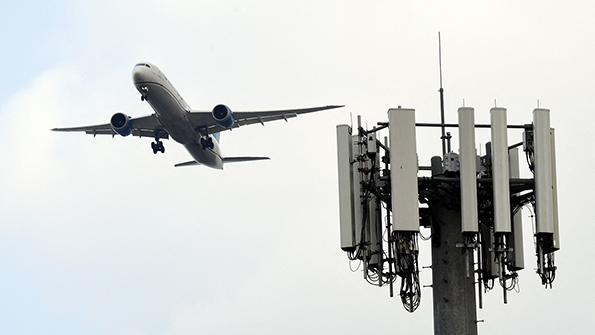
When FAA issued its plan to ensure airliner avionic systems would not be compromised by incoming 5G wireless phone service across the US, airlines around the world saw red.
The new 5G services introduced by AT&T and Verizon Wireless in the US in January use the 3.7-3.98 GHz band of the radio spectrum. This poses a potential risk to many aircraft radio altimeters, or radalts, which use the adjacent 4.2-4.4 GHz frequency band and which calculate the precise distance between an aircraft and the ground, feeding many safety-related systems.
The new 5G service was originally supposed to go live in December 2021. But FAA has pushed back the deadline for 5G deployment near airports multiple times, saying it needed more time to assess the safety threat and to come up with a fix.
In July, with the wireless companies running out of patience, FAA outlined that plan, which involves installing filters or other protections that will make the radalts more resilient.
The response from the international airline community was essentially, “hell, no.”
A letter from eight airline associations, including IATA, and more than 100 carriers was sent to FAA acting administrator Billy Nolen. It detailed their concerns about the proposal, which included the short deadline to get aircraft retrofitted with filter systems; the fact that FAA has yet to initiate a formal regulatory process such as an airworthiness directive and that no radalt retrofit systems have been certified; and the lack of formal and specific guidance on the exact performance specifications for current and/or future radalts with regard to 5G interference.
FAA’s plan divides the estimated 7,500 affected domestic and international aircraft into three groups. Retrofits will be done in phases, aligning modified aircraft with wireless company plans to steadily boost their networks to minimize disruption.
Group 1 aircraft, the most affected by current and planned future network rollouts, consists of Embraer regional jets with a retrofit target plan of November. Group 2 features Airbus narrowbodies, with a deadline of January 2023. Group 3 is broken into three subgroups and has the most models, including the Airbus A380, Boeing 737 Next Generation and MAX and 777 fleets, and the MHI/Bombardier regional jets. Some of these face a March 2023 deadline, while the rest have until July 1.
The airlines and associations, in their letter, note that ongoing supply-chain issues make those deadlines even more concerning. They also raise the point that where airlines are unable to get the retrofits done by deadline, competition in some international markets could become skewed toward those airlines that have retrofitted their planes.
It’s highly unusual for so many airlines and their representative organizations to align so strongly and publicly against an FAA proposal, even more so when the proposal is safety based.
But the points they raise are fair, especially the short timelines and lack of a specific, technical roadmap.
The real question, however, is how did FAA get into this position, seemingly cornered by the wireless companies and now pressed into rushing a fix?
This is not a new problem. Back in 2018, the US government began talks to auction off some of the C-band wireless spectrum. The auctions were completed in early 2021 and AT&T and Verizon set their 5G rollouts to begin in December 2021.
Only then did FAA raise its safety concerns. Radalts were developed decades before this type of wireless technology existed; the aviation authority said it needed time to examine whether there could be problems before the wireless towers were turned on.
The response from the wireless companies was that they had not seen any issues elsewhere, they were prepared to delay rollout while FAA did its investigations, but they wouldn’t delay indefinitely.
Behind the scenes, new technology business minds with a commercial focus butted against old technology bureaucratic minds that don’t see time as cost when it comes to safety.
To be fair to FAA, the wireless companies—which have invested heavily to obtain these wireless spectrums (not just with government approval, but from the government) and develop 5G technology—were initially reluctant to share the technical information that FAA needed to assess the safety risk. To the highly competitive wireless companies, information such as where their towers would be located, specifically, the power they’d emit, and the precise span of signals is proprietary.
Other countries, however, including Brazil, Canada and Thailand, have seen 5G implemented without issues related to aviation. The wireless carriers proposed FAA could adopt a French model for activating their 5G towers in the vicinity of airports, but FAA countered there were different geographies and dynamics at stake. Whether that was true or whether it was more a case of not wanting to adopt a not-invented-here fix can only be guessed at.
Ultimately, leverage and time-setting power is shifting toward the faster-moving, high-tech commercial sector.
US federal agencies like FAA have to catch up and must collaborate and make clear their specific needs earlier, both to the airlines, which at least understand the safety-related complexities, and to wider industry, which likely does not.
Millions of people want to fly safely, of course. But many millions more want the latest technology smartphone … now.
Sean Broderick and Bill Carey contributed to this article and discussed this5G issue
on a Window Seat podcast episode, which you can access at bit.ly/3bVRi4M.



Comments